Baumr-AG BT-689 Handleiding
Baumr-AG
Niet gecategoriseerd
BT-689
Bekijk gratis de handleiding van Baumr-AG BT-689 (18 pagina’s), behorend tot de categorie Niet gecategoriseerd. Deze gids werd als nuttig beoordeeld door 79 mensen en kreeg gemiddeld 4.0 sterren uit 40 reviews. Heb je een vraag over Baumr-AG BT-689 of wil je andere gebruikers van dit product iets vragen? Stel een vraag
Pagina 1/18

Video Tutorial:
Tillers – Assembly
User Manual
[Revision 4 ].0 April 2022
READ THIS MANUAL CAREFULLY BEFORE USE – FAILURE TO DO SO MAY RESULT IN INJURY, PROPERTY DAMAGE
AND MAY VOID WARRANTY. • KEEP THIS MANUAL FOR FUTURE REFERENCE. • Products covered by this manual may
vary in appearance, assembly, inclusions, specifications, description and packaging.
The product is NOT supplied with engine oil, although traces of oil from the manufacturing process may be present. It is
essential to add adequate engine oil of the correct type to the engine before use. Failure to add engine oil will void the
product warranty.

6 Blade Tiller/Cultivator - BT- 689
E&OE © -AG 2 2022 Baumr
Safety
Safety messages are designed to alert you to possible dangers or hazards that could cause death, injury or
equipment or property damage if not understood or followed. Safety messages have the following symbols:
You WILL be KILLED or
SERIOUSLY INJURED if you do
not follow instructions.
You CAN be KILLED or
SERIOUSLY INJURED if you do
not follow instructions.
You CAN be INJURED if you do
not follow instructions or equipment
damage may occur.
It is vital that you read and understand this
user manual before using the product,
including safety warnings, and any assembly
and operating instructions. Keep the manual
for future reference.
Safety precautions and recommendations
detailed here must be fully understood and
followed to reduce the risk of injury, fire,
explosion, electrical hazard, and/or property
damage.
Safety information presented here is generic
in nature some advice may not be –
applicable to every product. The term
"equipment" refers to the product, be it
electrical mains powered, battery powered or
combustion engine powered.
• - Before Use If you are not familiar with the
safe operation/handling of the equipment or
are in any way unsure of any aspect of
suitability or correct use for your
application, you should complete training
conducted by a person or organization
qualified in safe use and operation of this
equipment, including fuel/electrical handling
and safety.
• Do NOT operate the equipment in
flammable or explosive environments, such
as in the presence of flammable liquids,
gases or dust. The equipment may create
sparks or heat that may ignite flammable
substances.
• Keep clear of moving parts.
• Equipment may be a potential source of
electric shock or injury if misused.
• Do NOT operate the equipment if it is
damaged, malfunctioning or is in an
excessively worn state.
• Do NOT allow others to use the equipment
unless they have read this manual and are
adequately trained.
• - risk Keep packaging away from children
of suffocation! Operators must use the
equipment correctly. When using the
equipment, consider conditions and pay
due care to persons and property.
General Work Area Safety
• Work areas should be clean and well it.
• Do not operate the equipment if
bystanders, animals etc are within
operating range of the equipment or the
general work area.
• If devices are provided for connecting dust
extraction / collection facilities, ensure
these are connected and used properly.
Dust collection can reduce dust-related
hazards.
General Personal Safety
• Wear appropriate protective equipment
when operating, servicing, or when in the
operating area of the equipment to help
protect from eye and ear injury, poisoning,
burns, cutting and crush injuries. Protective
equipment such as safety goggles,
respirators, non slip safety footwear, hard -
hat, hearing protection etc should be used
for appropriate equipment / conditions.
Other people nearby should also wear
appropriate personal protective equipment.
Do not wear loose clothing or jewellery,
which can be caught in moving parts. Keep
hair and clothing away from the equipment.
• Stay alert and use common sense when
operating the equipment. Do not over-
reach. Always maintain secure footing and
balance.
• Do not use the equipment if tired or under
the influence of drugs, alcohol or
medication.
• This equipment is not intended for use by
persons with reduced physical, sensory or
mental capabilities.
General Fuel Safety
• Petrol/fuel/gasoline is extremely flammable
– keep clear of naked flames or other
ignition sources.
• Do not spill fuel. If you spill fuel, wipe it off
the equipment immediately if fuel gets on –
your clothing, change clothing.
• Do NOT smoke near fuel or when
refuelling.
• Always shut off the engine before
refuelling.
• Do NOT refuel a hot engine.
• Open the fuel cap carefully to allow any
pressure build up in the tank to release -
slowly.
• Always refuel in well ventilated areas.
• Always check for fuel leakage. If fuel
leakage is found, do not start or run the
engine until all leaks are fixed.
General Carbon Monoxide Safety-
• Using a combustion engine indoors CAN
KILL IN MINUTES. Engine exhaust
contains carbon a poison you -monoxide –
cannot smell or see.
• Use combustion engines OUTSIDE only,
and far away from windows, doors and
vents.
General Equipment Use and Care
• The equipment is designed for domestic
use only.
• Handle the equipment safely and carefully.
• Before use, inspect the equipment for
misalignment or binding of moving parts,
loose components, damage or any other
condition that may affect its operation. If
damaged, have the equipment repaired by
an authorised service centre or technician
before use.
• Prevent unintentional starting of the
equipment - ensure equipment and power
switches are in the OFF position before
connecting or moving equipment. Do not
carry equipment with hands or fingers
touching any controls. Remove any tools or
other items that are not a part of the
equipment from it before starting or
switching on.
• Do not force the equipment. Use the
correct equipment for your application.
Equipment will perform better and be safer
when used within its design and usage
parameters.
• Use the equipment and accessories etc. in
accordance with these instructions,
considering working conditions and the
work to be performed. Using the equipment
for operations different from those intended
could result in hazardous situations.
• Always keep equipment components
(engines, hoses, handles, controls, frames,
housings, guards etc) and accessories
(cutting tools, nozzles, bits etc) properly
maintained. Keep the equipment clean and,
where applicable, properly lubricated.
• Store the equipment out of reach of
children or untrained persons. To avoid
burns or fire hazards, let the equipment
cool completely before transporting or
storing. Never place or store the equipment
near flammable materials, combustible
gases or liquids etc.
• -The equipment is not weather proof, and
should not be stored in direct sunlight, at
high ambient temperatures or locations that
are damp or humid.
• Do not clean equipment with solvents,
flammable liquids or harsh abrasives.
• For specific equipment safety use and care,
see Equipment Safety.

6 Blade Tiller/Cultivator - BT- 689
E&OE © -AG 3 2022 Baumr
General Electrical Safety
• Inspect electrical equipment, extension
cords, power bars, and electrical fittings for
damage or wear before each use. Repair or
replace damaged equipment immediately.
• Ensure all power sources conform to
equipment voltage requirements and are
disconnected before connecting or
disconnecting equipment.
• When wiring electrically powered
equipment, follow all electrical and safety
codes.
• Wherever possible, use a residual current
device (RCD).
• High voltage / high current power lines may
be present. Use extreme caution to avoid
contact or interference with power lines.
Electrical shock can be fatal.
General Electrical Safety
• Electrically grounded equipment must have
an approved cord and plug and be
connected to a grounded electrical outlet.
• Do NOT bypass the ON/OFF switch and
operate equipment by connecting and
disconnecting the electrical cord.
• Do NOT use equipment that has exposed
wiring, damaged switches, covers or
guards.
• Do NOT use electrical equipment in wet
conditions or in damp locations.
• Do NOT use electrical cords to lift, move or
carry equipment.
• Do NOT coil or knot electrical cords, and
ensure electrical cords are not trip hazards.
General Service Information
• The equipment must be serviced or
repaired at authorised service centres by
qualified personnel only.
• Replacement parts must be original
equipment manufacturer (OEM) to ensure
equipment safety is maintained.
• Do NOT attempt any maintenance or repair
work not described in this manual.
• After use, the equipment and components
may still be hot allow the equipment to –
cool and disconnect spark plugs and/or
electrical power sources and/or batteries
from it before , changing adjusting
accessories or performing repair or
maintenance.
• Do NOT adjust while the equipment is
running.
• Perform service related activities in suitable
conditions, such as a workshop.
• Replace worn, damaged or missing
warning/safety labels immediately.
Tiller Safety
Accurate assembly and safe and effective use of the rototiller is the owner’s responsibility.
• Read and follow all safety instructions.
• Carefully follow all assembly instructions.
• Ensure that anyone who uses the tiller must read the manual and be familiar with all controls and safety precautions.
• Operate the tiller according to the safety instructions and recommendations outlined here.
• Your tiller is equipped with a safety device that enables you to stop the wheels and tines in an emergency.
• Learn how to safely control the tiller at all times.
• Do not allow children to operate this rototiller. Keep small children away from the area being tilled. Do not allow adults to operate the tiller without
proper instruction.
• Dress appropriately when operating the tiller. Always wear sturdy footwear. Never wear sandals, sneakers or open shoes and never operate the
tiller with bare feet. Do not wear loose clothing that might get caught in moving parts.
• Carefully inspect the area to be tilled and remove all foreign objects. Do not till above underground water lines, gas lines, electric cables or pipes.
Do not operate the tiller in soil with large rocks and foreign objects which can damage the equipment.
• Disengage all clutches and leave all control levers in the neutral position before starting the engine.
• Handle fuel with care; it is highly flammable:
• Use an approved fuel container.
• Never add fuel to a running engine or hot engine.
• Fill the fuel tank outdoors with extreme care. Never fill the fuel tank indoors.
• Replace the gasoline cap securely and clean up spilled fuel before restarting.
• Never operate the tiller without guards, covers and hoods in place.
• Be extremely cautious when operating in reverse. Take extra care to avoid slipping or falling, and keep hands and feet clear from the tines.
• Use extreme caution when operating on or crossing gravel drives, walks or roads. Stay alert for hidden hazards or traffic.
• After striking a foreign object, stop the engine, remove the wire from the spark plug, thoroughly inspect the tiller for any damage and repair the
damage before restarting and operating the tiller.
• If vegetation clogs the tines, raise the handlebars to elevate the lines and run the tiller in reverse. If this does not clean chopped vegetation from
the tines, stop the engine and disconnect the spark plug wire before removing vegetation by hand.
• The engine muffler will be hot from operation. Do not touch it with bare skin or a severe burn may result.
• If the unit should start to vibrate abnormally, stop the engine and check immediately for the cause. Vibration is generally a sign of trouble.
• Do not run the engine indoors; exhaust fumes are deadly.
• Do not overload the machine capacity by attempting to fill too deep at too fast a rate.
• Never operate the machine at high transport speeds on slippery surfaces. Look behind and use care when backing.
• Never allow bystanders near the unit.
• Use only attachments and accessories approved by the manufacturer of the tiller.
• Never operate the tiller without good visibility or light.
• Be careful when tilling in hard ground. The tines may catch in the ground and propel the tiller backwards. If this occurs, let go of the handlebars
and do not restrain the machine.
• Take all possible precautions when leaving the machine unattended. Disengage all control levers, stop the engine, wait for all moving parts to
stop and make certain guards and shields in place.
Product specificaties
| Merk: | Baumr-AG |
| Categorie: | Niet gecategoriseerd |
| Model: | BT-689 |
Heb je hulp nodig?
Als je hulp nodig hebt met Baumr-AG BT-689 stel dan hieronder een vraag en andere gebruikers zullen je antwoorden
Handleiding Niet gecategoriseerd Baumr-AG
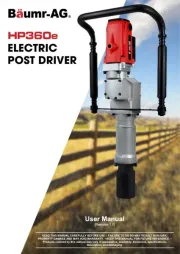
15 Juni 2025

20 Mei 2023

7 Mei 2023

30 April 2023

13 April 2023

12 April 2023

5 April 2023

4 April 2023

3 April 2023

28 Maart 2023
Handleiding Niet gecategoriseerd
- LUCIDA
- De Buyer
- Guzzanti
- ALC
- KS Tools
- Ariston Thermo
- Safescan
- Aluratek
- Hedbox
- Ulanzi
- Stihl
- Schabus
- Middle Atlantic
- Advance Acoustic
- Zojirushi
Nieuwste handleidingen voor Niet gecategoriseerd
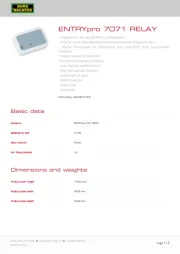
2 Augustus 2025
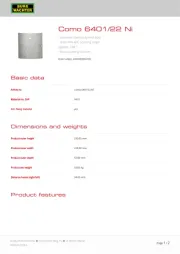
2 Augustus 2025
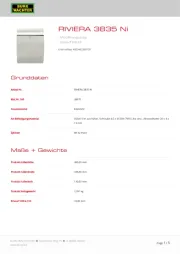
2 Augustus 2025
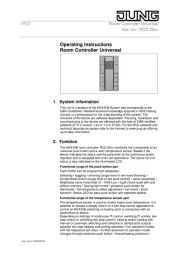
2 Augustus 2025
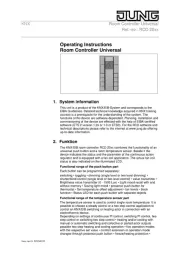
2 Augustus 2025
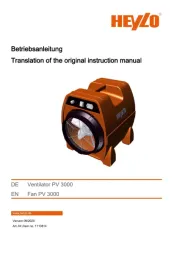
2 Augustus 2025
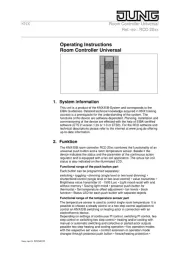
2 Augustus 2025
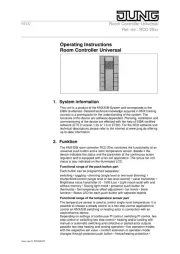
2 Augustus 2025
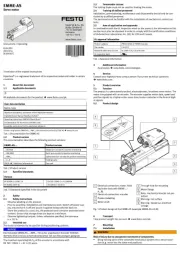
2 Augustus 2025
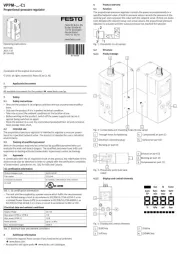
2 Augustus 2025